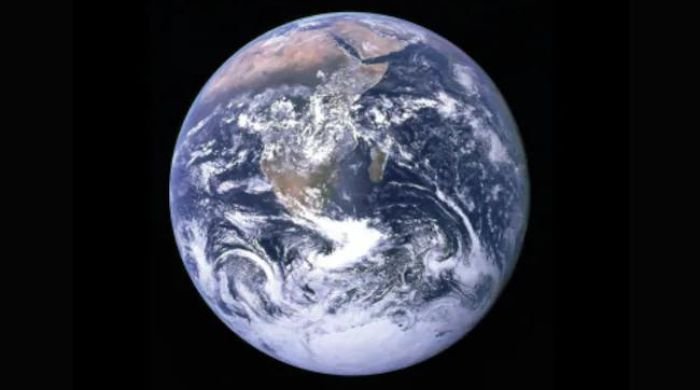Anew study confirms rotation of earth’s inner core is slowing down.
A groundbreaking study by scientists at the University of Southern California (USC) has revealed that Earth’s inner core rotation is slowing down than the planet’s surface, a discovery that could significantly impact our understanding of planetary mechanics, as reported by Science Alert.
This novel research also suggests potential effects on the stability of Earth’s magnetic field and the length of our days.
Published in Nature, the study indicates that the inner core’s rotation began to slow around 2010.
This marks the first time in nearly 40 years that the inner core—a super-hot, super-dense sphere composed of iron and nickel located more than 4,800 kilometers beneath the Earth’s surface—has been moving slower than the mantle.
According to a new study from Wang, W., Vidale, J.E., Pang, G. et al., published 12 June 2024 in Nature, the Earth’s inner core began to slow down its rotation’s speed compared with the planet’s surface around 2010.
The researchers think that this slowdown was due to the… pic.twitter.com/xi7eZzAFp7
— Nereide (@Nereide) June 14, 2024
The research team, led by John Vidale, analyzed data from 121 repeating earthquakes recorded between 1991 and 2023 near the South Sandwich Islands in the South Atlantic.
They also incorporated data from Soviet nuclear tests conducted between 1971 and 1974, along with additional data from French and American nuclear tests.
Also read: Earth receives laser message from 140 million miles away in deep space
“When I first saw the seismograms hinting at this change, I was stumped. But finding two dozen more observations indicating the same pattern made the conclusion inescapable. The inner core had slowed for the first time in many decades. While other scientists have proposed similar and different models, our latest study provides the most convincing evidence,” said Vidale, who is the Dean’s Professor of Earth Sciences at the USC Dornsife College of Letters, Arts and Sciences.
According to Vidale, the deceleration of the inner core’s rotation is due to the turbulent movement of the liquid outer core, which generates Earth’s magnetic field, and the gravitational forces from dense regions in the rocky mantle above.
Also read: Earth’s inner core may have started spinning other way: study
This alteration in the inner core’s rotation could gradually affect the entire planet’s rotation, potentially extending the length of a day by fractions of a second.
Vidale emphasized that these changes are extremely subtle, measuring around a thousandth of a second, and are almost imperceptible amidst the noise generated by the Earth’s oceans and atmosphere.
The research team plans to further investigate the inner core’s trajectory to uncover the precise reasons behind its shifting behavior.
“The dance of the inner core might be even more lively than we know so far,” Vidale remarked.
